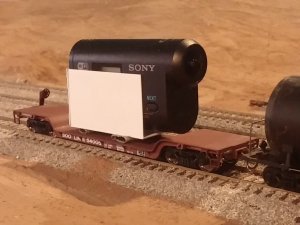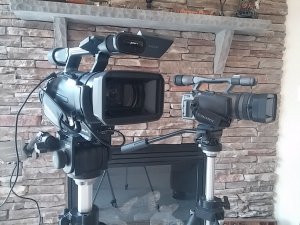N
NP2626
Guest
First thing you need to know about me is I know absolutely nothing about actually shooting a video. I have no video cameras excepting my HP Digital Camera, which has a movie option that I have never used. While I have no specific video making experience, I do know what makes for a good video of model railroading. I go to the various You Tube and other places where I can watch videos and I have also watched a few minutes of Ron' Trains and Things videos enough to know that that is about all I can take of his videos.
Here is what I do know:
1). Don't take 4-5 minutes of introduction discussing yourself, who you are and what your going to show. Minimize all the forward stuff and get right to the video! If you have a point to make or want to demonstrate how to do something, do it. In particular this is what I see RTnT doing and I feel he is wasting my time! I don't want to sit and listen to Ron expound upon himself;or, what he feels is important.
2). There is a video on the NMRA Website of Kathy Millatt discussing the typical difference between layouts here in the U.S. and layouts in the U.K. The discussion is very well done; but, the person shooting the video is holding the camera in his hands, making for a very lumpy ride! I have watched about 2-3 minutes of this video and can not continue as I start getting sort of sea sick. This is bad as I am a sailor and have spent hours out on the water in very rough seas and never had a hint of sea sickness!
3). Don't shoot 10 seconds of a train moving somewhere, shut off the camera and move to another scene and start shooting. When making a video, edit out these short sequences and try to find the most interesting things to take videos of.
I know, I Know, here is another instance of Mark Belly-aching about something! However, in making videos, I think there are points needing to be met, otherwise I think you should not attempt doing so.
Surely you have points you feel should be met and I invite you to make them here. I also realize making videos is likely akin to building a model railroad and nothing can replace experience. However, to put videos here; or, at other locations on the internet there is minimum criteria to be met and you need to know what they are!
Certainly there are other important facts that we all can make here. If you have suggestions for helping people do better jobs with their video making, by all means suggest them here!
Maybe I am meaning to ruffle a few feathers here
Here is what I do know:
1). Don't take 4-5 minutes of introduction discussing yourself, who you are and what your going to show. Minimize all the forward stuff and get right to the video! If you have a point to make or want to demonstrate how to do something, do it. In particular this is what I see RTnT doing and I feel he is wasting my time! I don't want to sit and listen to Ron expound upon himself;or, what he feels is important.
2). There is a video on the NMRA Website of Kathy Millatt discussing the typical difference between layouts here in the U.S. and layouts in the U.K. The discussion is very well done; but, the person shooting the video is holding the camera in his hands, making for a very lumpy ride! I have watched about 2-3 minutes of this video and can not continue as I start getting sort of sea sick. This is bad as I am a sailor and have spent hours out on the water in very rough seas and never had a hint of sea sickness!
3). Don't shoot 10 seconds of a train moving somewhere, shut off the camera and move to another scene and start shooting. When making a video, edit out these short sequences and try to find the most interesting things to take videos of.
I know, I Know, here is another instance of Mark Belly-aching about something! However, in making videos, I think there are points needing to be met, otherwise I think you should not attempt doing so.
Surely you have points you feel should be met and I invite you to make them here. I also realize making videos is likely akin to building a model railroad and nothing can replace experience. However, to put videos here; or, at other locations on the internet there is minimum criteria to be met and you need to know what they are!
Certainly there are other important facts that we all can make here. If you have suggestions for helping people do better jobs with their video making, by all means suggest them here!
Maybe I am meaning to ruffle a few feathers here
Last edited by a moderator:




